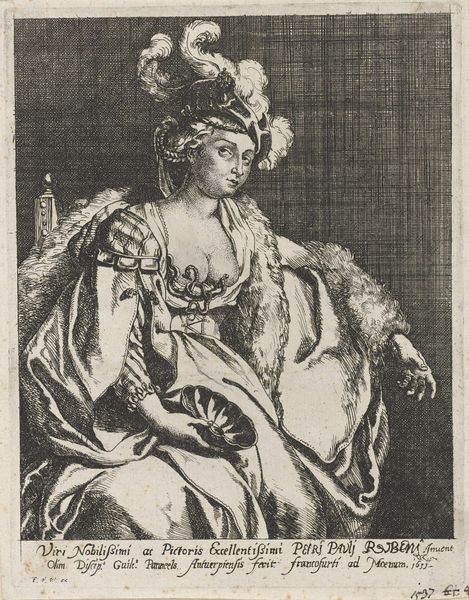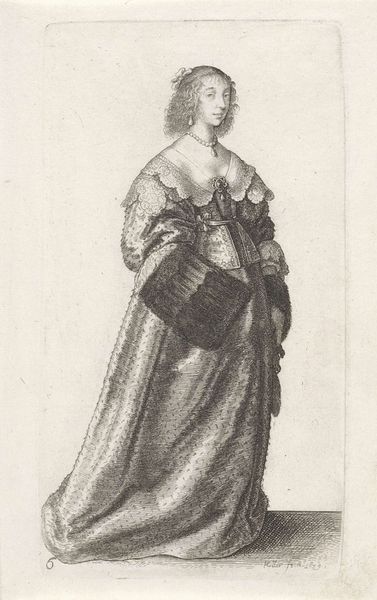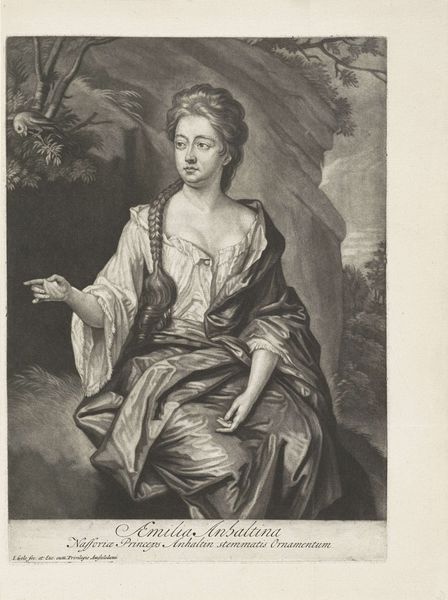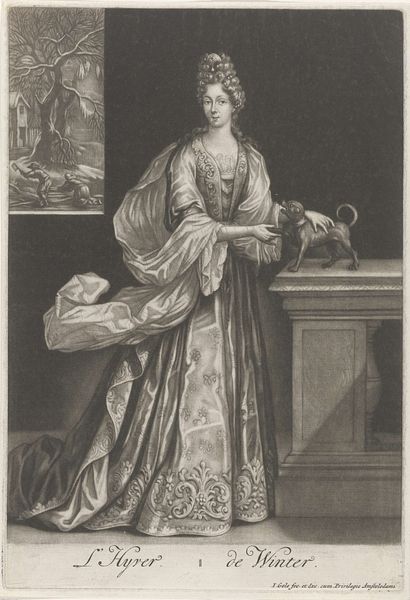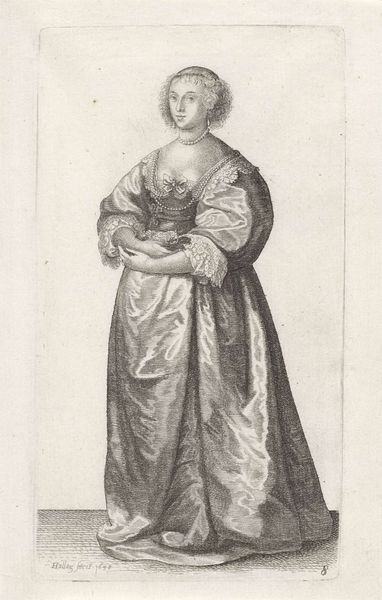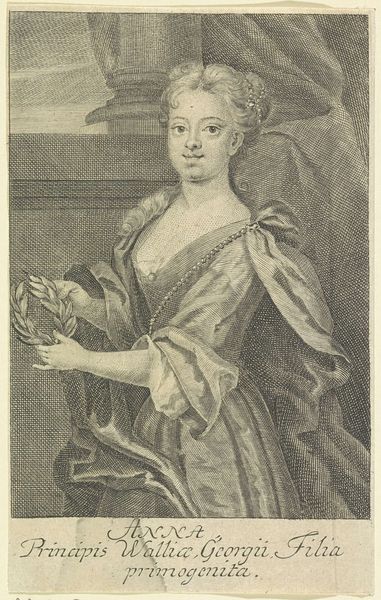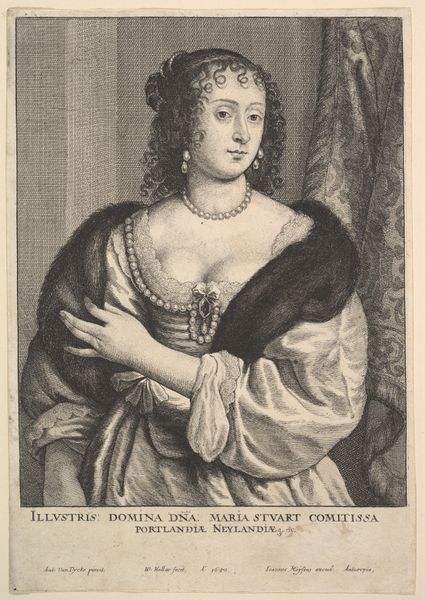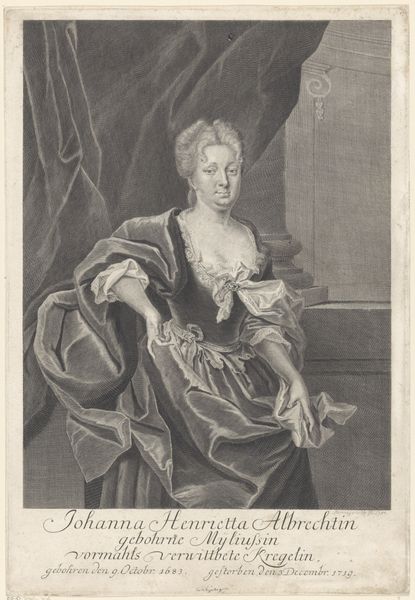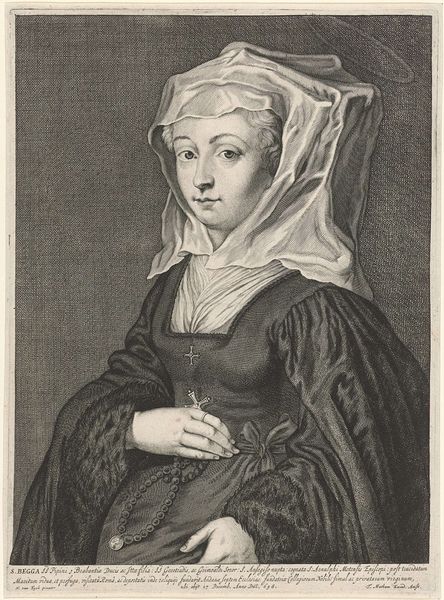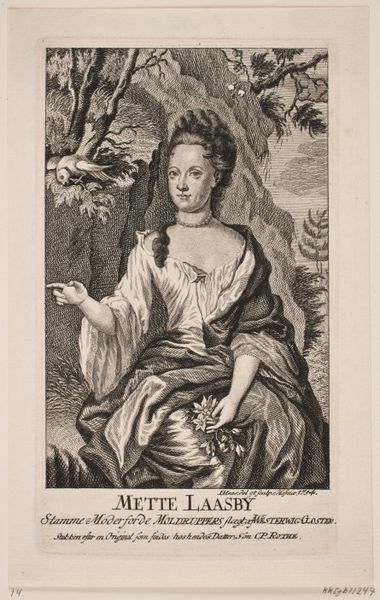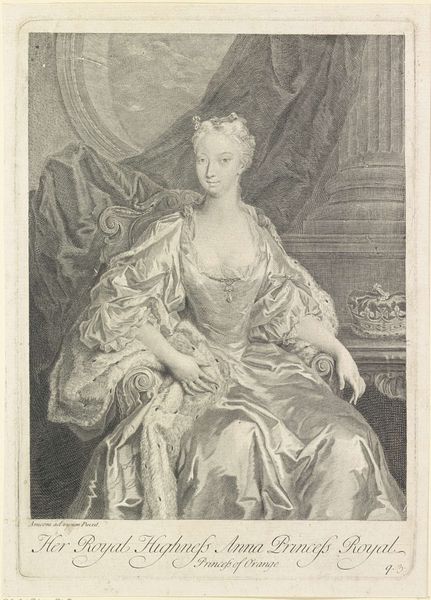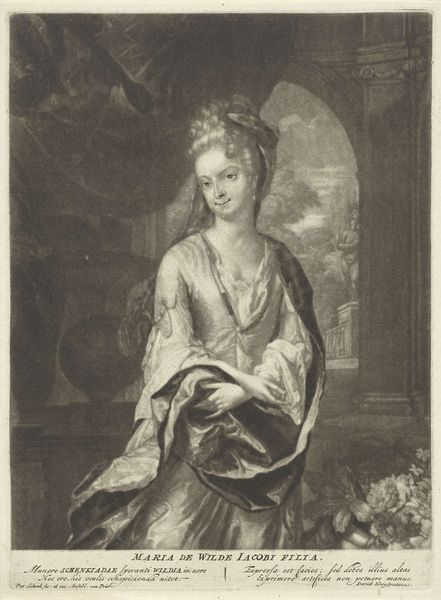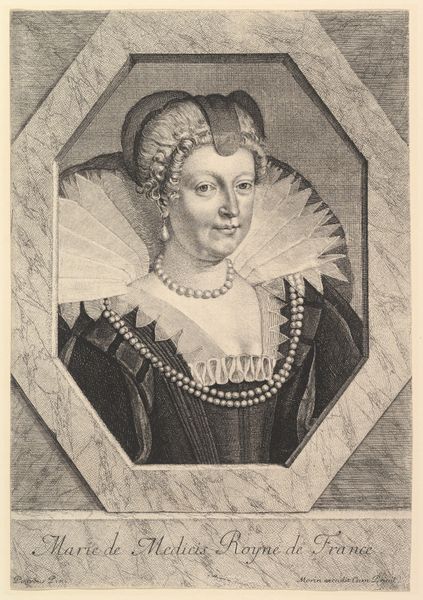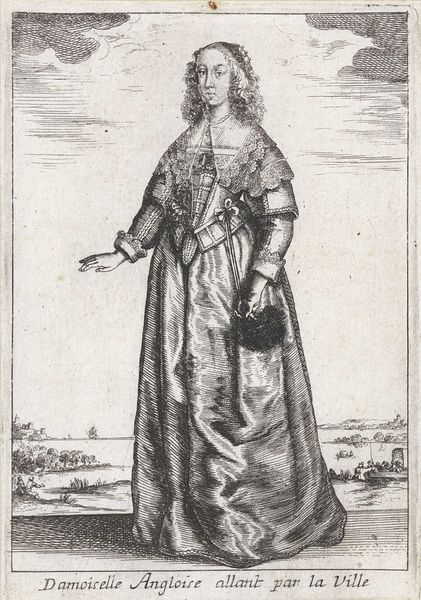
print, intaglio
#
portrait
#
baroque
# print
#
intaglio
#
pencil drawing
#
portrait drawing
#
nude
Dimensions: height 282 mm, width 206 mm
Copyright: Rijks Museum: Open Domain
Curator: Here we have “Venetiaanse courtisane,” a compelling piece housed right here at the Rijksmuseum. The artwork is credited to Lucas (II) Vorsterman and thought to have been created sometime between 1651 and 1679. It’s an intaglio print, a technique where the image is incised into a surface. Editor: It’s stark, isn’t it? The woman’s gaze is so direct, almost confrontational. And the textures created by the intaglio are remarkable; you can practically feel the fur stole she’s wearing. The details in the hair, contrasted with her bare breast, is so fascinating. Curator: Indeed. Intaglio allowed for intricate detailing and tonal variations, important for capturing the light playing on her skin and fabrics. Vorsterman really showcases the baroque era's interest in portraying realism alongside theatrical flair. This aesthetic marries a gritty realness with an aspirational one. Editor: There's an intriguing power dynamic in play, too. The partially revealed bosom, the rich clothing, contrasted with her simple jewelry – all hinting at her status, simultaneously visible and veiled. It makes me consider the social codes that would surround the image of a woman like this being distributed as a print. What does her gaze mean for the viewers throughout history? Curator: Exactly! And let’s remember, “courtesan” then didn’t just mean sex worker; these women wielded cultural influence, they could be intellectuals and patrons of the arts, which perhaps is symbolized by her attire, which indicates a certain level of education. And note the inscriptions, or verses, that function almost like an endorsement, comparing her favourably to works by Titian. So here we’re explicitly acknowledging artistic merit, rather than shame or degradation. Editor: Right. It complicates a simple read of objectification, then. A negotiation of power. To think of who may have encountered this image: elites in private collections, perhaps artists using it for study. I wonder, how was her likeness understood and appropriated by the public of the era? I wonder also of its status in the collection now, in the museum space today. Curator: A truly intriguing snapshot into a complex period. It showcases how the visual can reflect social tensions. I encourage our audience to reflect on the image's symbolism, and its commentary about female representation in art. Editor: An iconic work that speaks of the complexities between art, social standing, and representation. What a potent reminder of the history encoded in a single print.
Comments
No comments
Be the first to comment and join the conversation on the ultimate creative platform.
